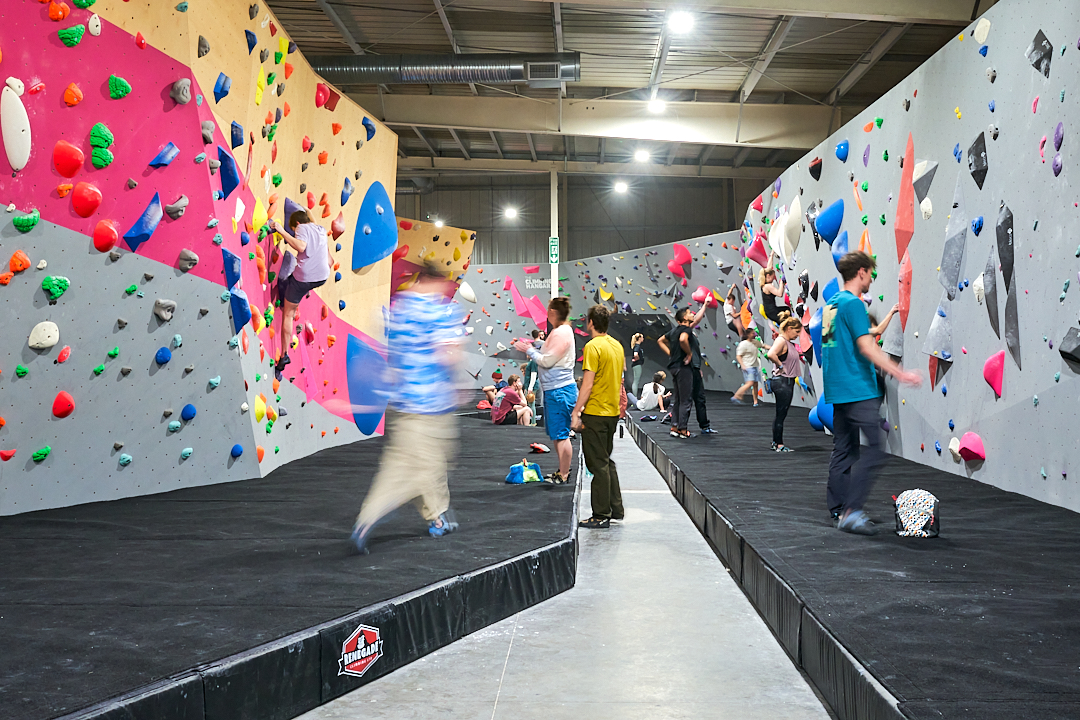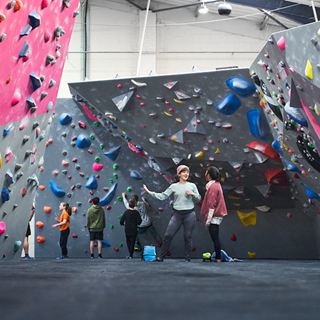
What to Expect from an Indoor Bouldering Gym
Indoor bouldering is a form of rock climbing that takes place on walls typically 4.5 meters high, with padded mats below to protect climbers in case of a fall. Unlike traditional rock climbing, bouldering doesn't require ropes or harnesses. This makes it accessible and less intimidating for newcomers. When you step into a bouldering gym like The Climbing Hangar, you'll notice routes, or "problems," marked by coloured holds. Each colour represents a different difficulty level, allowing climbers to gradually progress as they improve their skills.
The atmosphere in a bouldering gym is usually welcoming and inclusive. You’ll see climbers chatting, sharing tips, and encouraging each other. It’s a community where everyone supports each other, making it an ideal environment for beginners.

Top Tips for a Great First Climbing Experience
1. Start with an Induction Session: Many gyms, including The Climbing Hangar, offer induction sessions for newcomers. At TCH, they're free and included in your first visit. These sessions introduce you to the basics of bouldering, safety protocols, and gym etiquette. They’re a great way to get comfortable with the environment and ask any questions you might have.
2. Warm Up Properly: Climbing is a full-body workout, so it's important to prepare your muscles. Start with some light cardio and dynamic stretches to get your blood flowing. Pay special attention to your fingers, wrists, and shoulders as they’ll likely do a little more work than they would day to day.
3. Choose the Right Routes: Begin with the easiest problems to get a feel for the holds and movements. Don’t be discouraged if you can't complete a route right away. Bouldering is about problem-solving and persistence. Each attempt teaches you something new.
4. Focus on Technique: Good technique is more important than brute strength. Use your legs to push up rather than pulling yourself with your arms. Keep your body close to the wall and plan your moves in advance. Watch experienced climbers and mimic their techniques.
5. Take Breaks and Stay Hydrated: Climbing can be exhausting, especially when you’re starting out. Take regular breaks to rest your muscles and drink plenty of water. This will help prevent fatigue and reduce the risk of injury.
6. Listen to Your Body: It’s normal to feel sore after your first few sessions, but sharp pain is a sign to stop. Pushing through pain can lead to injuries. Allow your body time to adapt to the new physical demands of climbing.

The Physical and Mental Benefits of Climbing
Bouldering is not just a fun activity; it’s also a fantastic workout. It builds strength, flexibility, and endurance. Additionally, it improves problem-solving skills and mental focus. The challenges you face on the wall require you to think creatively and remain calm under pressure. The sense of accomplishment from completing a difficult problem can boost your confidence and reduce stress.
At The Climbing Hangar, beginners are provided with a supportive environment to develop these skills. Whether it’s through beginner classes or community events, novice climbers can find plenty of opportunities to learn and grow.

Your first indoor bouldering experience can be both thrilling and rewarding. By knowing what to expect and following these tips, you’ll be well-prepared to enjoy your time at the gym. Remember, every climber started as a beginner, and with practice and perseverance, you’ll see improvement in no time. So, are you ready to conquer the wall and discover the joys of bouldering?
BOOK A CLIMB @ THE CLIMBING HANGAR
There is no better place to experience indoor bouldering for the first time than TCH.
We offer free climbing inductions with your first session and access to the Magic Moves circuit: 10 climbs designed to teach you basic bouldering tips right on the wall.
Because the best way to learn something new is to get up and do it.
BOOK NOW

